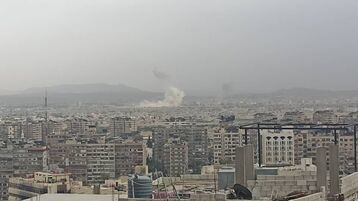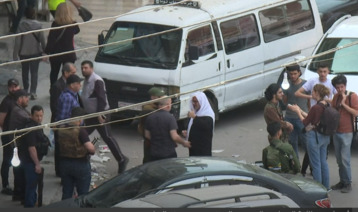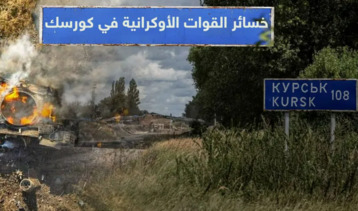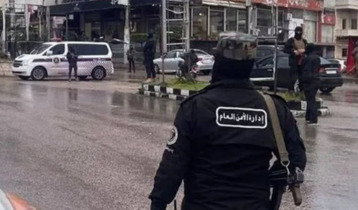-
Pentagon prepares for possible Taliban attacks during US withdrawal
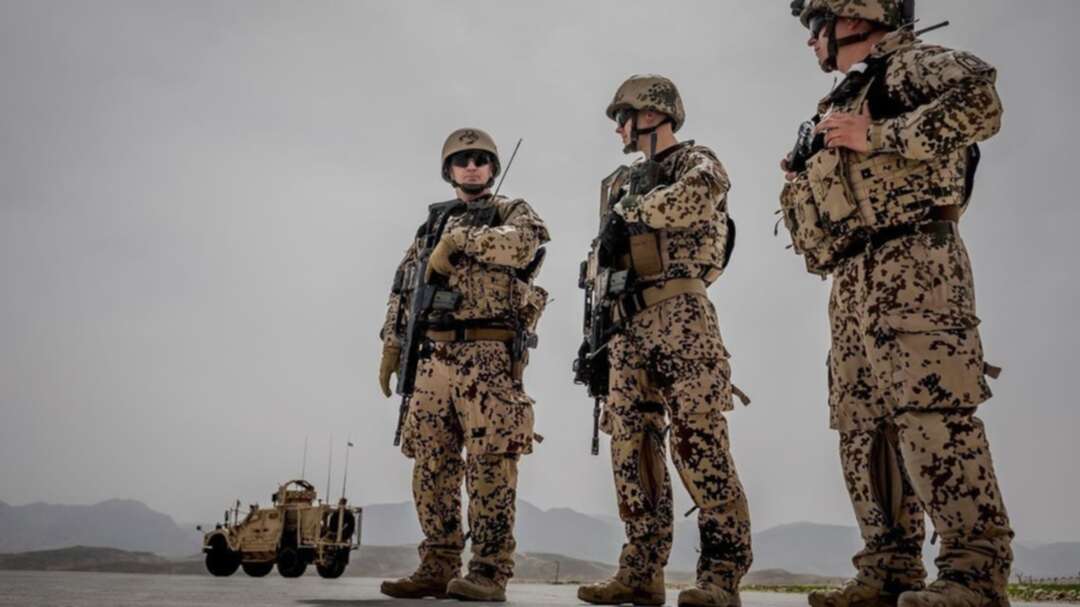
The Pentagon is preparing for possible Taliban attacks on US and coalition forces as they withdraw from Afghanistan, a prospect that complicates the outlook for winding down America’s longest war.
May 1 was the date all US and other foreign forces were to have departed Afghanistan under a February 2020 deal between the Taliban and the Trump administration. As part of that agreement, the Taliban halted attacks on US troops, and none has been killed since then. But the Taliban said it will consider the United States to be in violation of the agreement for missing the deadline for full withdrawal. Their representatives have been vague about whether they intend to attack starting May 1.
President Joe Biden’s decision to proceed with a final but delayed withdrawal adds a new element of security risk as the remaining 2,500 to 3,500 American troops, along with about 7,000 coalition troops and thousands of contractors, begin departing. Biden has said all will be gone by Sept. 11, the date of the 2001 terrorist attacks that prompted the US to invade Afghanistan in the first place.
“We have to assume that this drawdown will be opposed,” Pentagon press secretary John Kirby said Tuesday in explaining why Defense Secretary Lloyd Austin decided to keep an aircraft carrier in the Middle East and to move at least four B-52 bombers and portions of an Army Ranger task force to the region as a precaution.
“It would be irresponsible for us not to assume that this drawdown and forces drawing down — both American and from our NATO allies — could be attacked by the Taliban,” Kirby added.
Gen. Mark Milley, chairman of the Joint Chiefs of Staff, told reporters traveling with him Thursday that the pullout is “complex and not without risk.”
The military typically plans for worst-case scenarios to try to avoid being caught by surprise. The withdrawal from Afghanistan involves ground and air movements of troops, supplies and equipment that could be vulnerable to attack. For security reasons, withdrawal details are not being made public, but the White House and several defense officials confirmed Thursday that the drawdown has begun. Defense officials, speaking on condition of anonymity to discuss sensitive movements, said that in recent days some troops — described as “dozens” — and military equipment have left the country.
The State Department also is taking precautions. On Tuesday, it instructed all embassy personnel in Kabul to depart unless their jobs require them to be in Afghanistan. The order went well beyond the usual curtailment of staffers for security and safety reasons.
Even the most seasoned American analysts of the Afghan conflict are unsure what to expect of the Taliban. Bruce Riedel, a Middle East analyst at the Brookings Institution and former CIA analyst, wrote this week that it’s unclear whether the insurgents will attempt to disrupt the withdrawal, but he says they may escalate the war.
Seth Jones, a counterterrorism and Afghanistan expert as director of the international security program at the Center for Strategic and International Studies, said the Pentagon is wise to prepare for attacks, although he thinks the Taliban is likely to show restraint.
“They just want us to go,” he said in an interview. “And anything that starts to complicate that at least runs the risk of backfiring.” Among other things, killing Americans could prompt the Biden administration to rethink the withdrawal, which already is highly unpopular among many Republicans.
The possibility of resuming conflict with the Taliban is one of several uncertain aspects of the US withdrawal — beyond the key question of whether the pullout will lead to the collapse of the Afghan government. The US intends to continue counterterrorism operations, as needed, against al-Qaida and potentially other extremist groups in Afghanistan, but it’s not yet clear where those forces will be positioned. Also unclear is the extent to which American and coalition forces will continue to provide air and other military support for Afghan security forces during and after the withdrawal.
Gen. Frank McKenzie, who as head of US Central Command is responsible for US military operations in Afghanistan, has said little publicly about the likelihood of facing Taliban resistance.
“I would advise the Taliban that we will be well prepared to defend ourselves throughout the withdrawal process,” he said at a Pentagon press conference last week.
The extent to which the Taliban continue attacking Afghan government forces during the US withdrawal also is a Pentagon concern. Milley said Wednesday that Afghan security forces form “an outer layer” of security for American and coalition forces.
“As we withdraw, that will be a critical component that we’re going to watch very, very carefully — the level of attacks that the Taliban conduct on the Afghan security forces,” Milley said during a McCain Institute Sedona Forum appearance. The recent trend is worrisome, he said, with the Taliban conducting anywhere from a few dozen to 100 or more attacks a day despite hopes for a cease-fire leading to a peace deal.
The US military ended its ground combat operations against the Taliban in 2014 and transitioned to training, advising and supporting Afghan forces, including providing air cover for them against the Taliban. The hope was that Afghan government forces could hold their own against the Taliban and that a political settlement could be reached. The departure of US and coalition forces will test the Afghan government’s resolve in unpredictable ways, Milley said.
“In the worst-case analysis, you have a potential collapse of the government, a potential collapse of the military, you have a civil war, and you have all the humanitarian catastrophe that goes with it,” he said. On the other hand, the Afghan military has a lot of experience in countering the insurgents. “So it’s not a foregone conclusion that there will be an automatic fall of Kabul, so to speak,” he added.
source: The Associated Press
Image source: Reuters
Levant
You May Also Like
Popular Posts
Caricature
BENEFIT Sponsors BuildHer...
- April 23, 2025
BENEFIT, the Kingdom’s innovator and leading company in Fintech and electronic financial transactions service, has sponsored the BuildHer CityHack 2025 Hackathon, a two-day event spearheaded by the College of Engineering and Technology at the Royal University for Women (RUW).
Aimed at secondary school students, the event brought together a distinguished group of academic professionals and technology experts to mentor and inspire young participants.
More than 100 high school students from across the Kingdom of Bahrain took part in the hackathon, which featured an intensive programme of training workshops and hands-on sessions. These activities were tailored to enhance participants’ critical thinking, collaborative problem-solving, and team-building capabilities, while also encouraging the development of practical and sustainable solutions to contemporary challenges using modern technological tools.
BENEFIT’s Chief Executive Mr. Abdulwahed AlJanahi, commented: “Our support for this educational hackathon reflects our long-term strategic vision to nurture the talents of emerging national youth and empower the next generation of accomplished female leaders in technology. By fostering creativity and innovation, we aim to contribute meaningfully to Bahrain’s comprehensive development goals and align with the aspirations outlined in the Kingdom’s Vision 2030—an ambition in which BENEFIT plays a central role.”
Professor Riyadh Yousif Hamzah, President of the Royal University for Women, commented: “This initiative reflects our commitment to advancing women in STEM fields. We're cultivating a generation of creative, solution-driven female leaders who will drive national development. Our partnership with BENEFIT exemplifies the powerful synergy between academia and private sector in supporting educational innovation.”
Hanan Abdulla Hasan, Senior Manager, PR & Communication at BENEFIT, said: “We are honoured to collaborate with RUW in supporting this remarkable technology-focused event. It highlights our commitment to social responsibility, and our ongoing efforts to enhance the digital and innovation capabilities of young Bahraini women and foster their ability to harness technological tools in the service of a smarter, more sustainable future.”
For his part, Dr. Humam ElAgha, Acting Dean of the College of Engineering and Technology at the University, said: “BuildHer CityHack 2025 embodies our hands-on approach to education. By tackling real-world problems through creative thinking and sustainable solutions, we're preparing women to thrive in the knowledge economy – a cornerstone of the University's vision.”
opinion
Report
ads
Newsletter
Subscribe to our mailing list to get the new updates!

